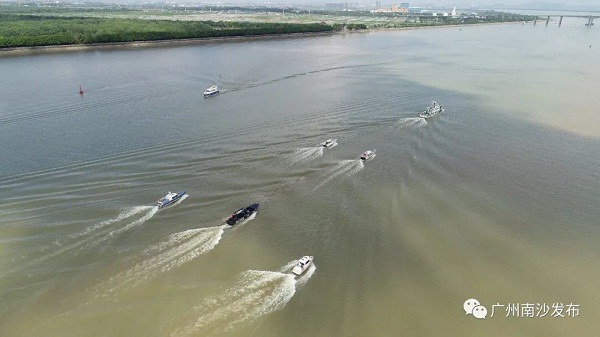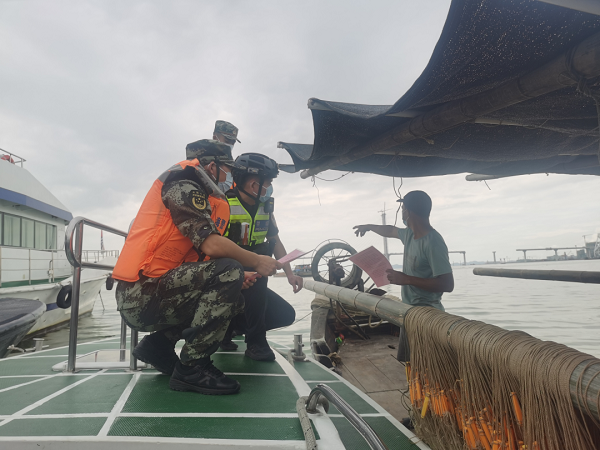Nansha fishing boats sail out to sea as moratorium ends
The three-and-a-half-month summer fishing moratorium in the South China Sea ended on Aug 16 and more than 260 fishing boats in Guangzhou's Nansha district prepared to set off to sea to catch fish, and lobsters, as well as other seafood.
On that day, Nansha launched a joint escort operation, checking the safety of each fishing boat, as well as the itinerary code and nucleic acid test results of each fisherman.
Nansha is the first district in Guangzhou to set up a nucleic acid testing point for convenience on the water, allowing fishermen to perform nucleic acid testing without going ashore. At the same time, convenient testing points have been set up at the Xinken Fishing Port's Chong 19 Aquatic Products Trading Wharf and Chong 14 Aquatic Product Trading Center.
A third-party testing agency will randomly sample and test the sea products on fishing boats at least once a week.
Officials also distributed COVID-19 antigen detection reagents and marine fishing boat identification flags on Aug 16.
The marine fishing boat identification flags are helpful for managers to quickly distinguish the attributes of fishing boats, while the detection reagents are convenient for fishermen to conduct COVID-19 self-tests on board when they come into contact with outsiders or before returning to the port and ashore.

Fishing boats sail out to sea after the South China Sea fishing moratorium ends on Aug 16. [Photo/WeChat account: nanshafabu]

The coast guards in Nansha educate fishermen about precautions when going to sea. [Photo/WeChat account: nanshafabu]
All rights reserved. Presented by China Daily









